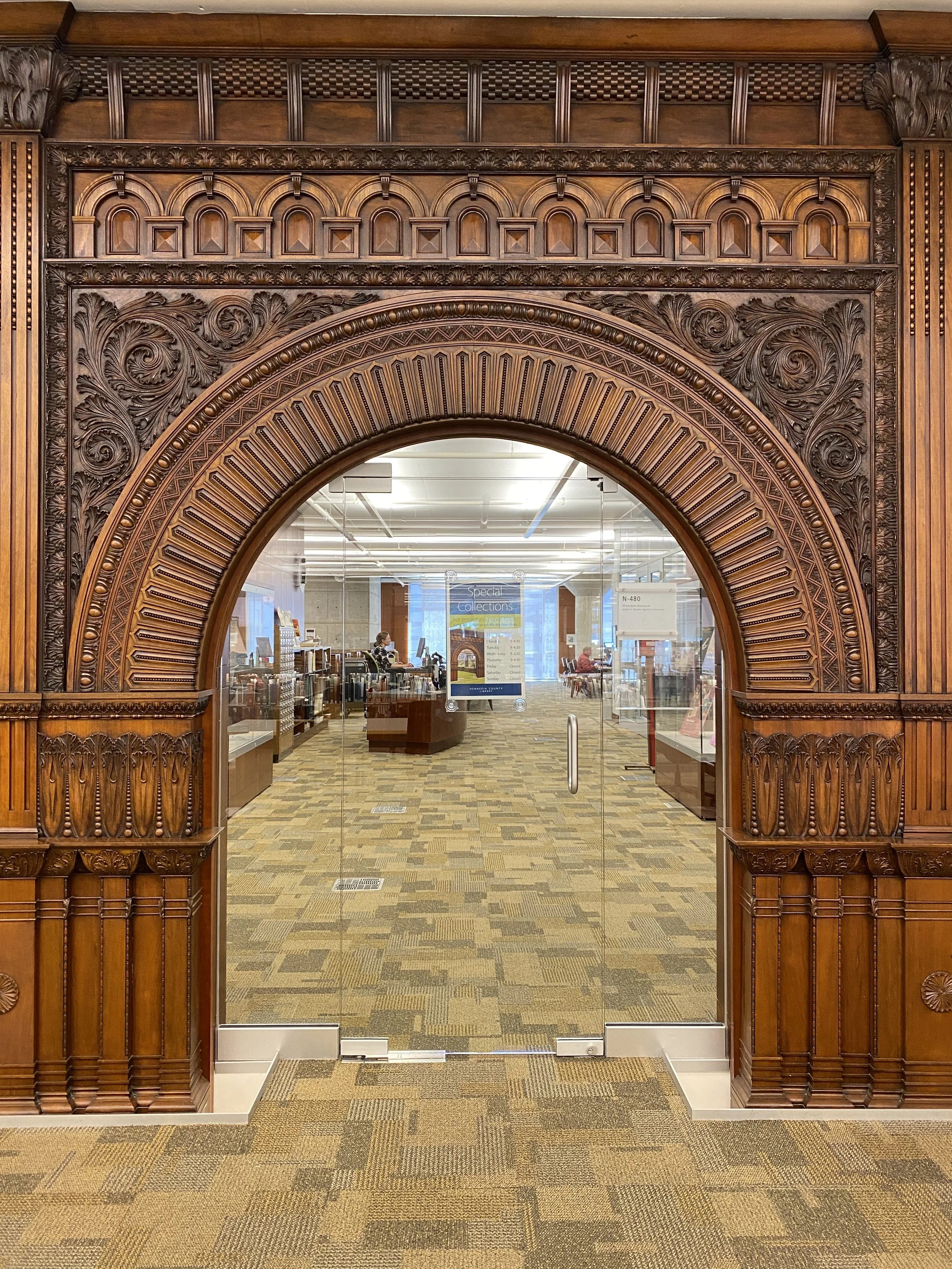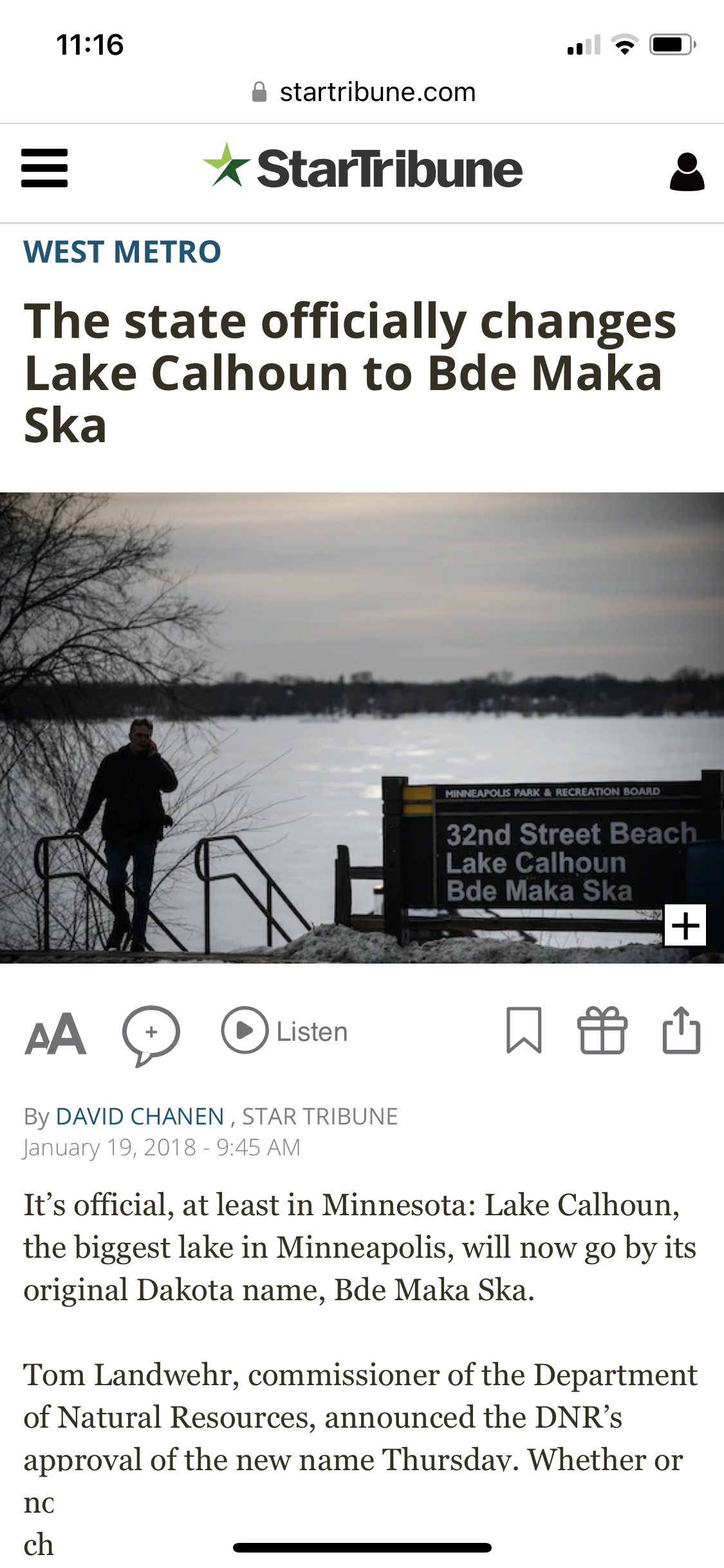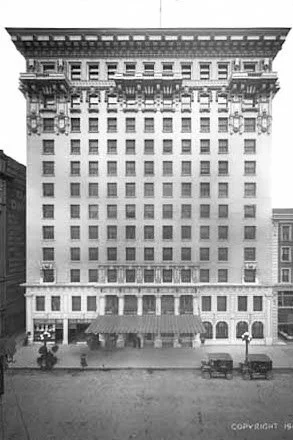Minnesota was French?
Minnesota is widely known for its distinctly Scandinavian flair (Don’cha know?). Even before becoming a state, Finns, Norwegians and Swedes were lured here and thrived in its similiar climate and landscape. But BEFORE Ole and Lena and all their brethren made their mark, French names like Jean-Baptiste et Marie were much more common.
Long before the boundaries of Canada or the United States existed, French explorers sailed further and further along the St. Lawrence river and into the Great Lakes. As they did, they came in contact with various indigenous tribes and began to trade with them for survival. The French needed food, shelter and clothing. They also needed to make money to pay back the investors back in France who financed their expeditions into the New World. First they found cod fish and then the further into the interior they sailed, they found beaver furs and copper. Soon, their trade became heavily influenced by the most french thing of all: Fashion.
Think “Pirates of the Caribbean”
Hats made from beaver fur were all the rage in 17th century Europe. The English King Charles I popularized the “Cavalier style” (he also bred Cavalier King Charles Spaniels) including low-wide collars, ruffled shirts, roomy pants, turned down boots and extravagant wide-brimmed hats. On the other end of the style spectrum were the Puritans. Protesting the sumptuous (and Catholic) style of the English royals, the Protestant Puritans made their own fashion statement. Their beaver hats were tall and stiff with a smaller brim. No matter the style, demand for beaver fur was so high that the Scandinavian and Russian beaver populations were nearly extinct. Fashionistas were relieved when a new supply of furs from North America supported their wardrobe aspirations.
The French Company of 100 Associates (Compagnie des Cent-Associés) was founded in 1628 and began sending settlers to New France. The goal was to monopolize the fur trade and establish a French colony, but until they were able to recruit and transport enough French citizens to supply manpower to the fur trade, they were forced to rely on their relationships with the indigenous peoples.
A la Façon du Pays
Of all the nationalities to attempt to live and work side by side with the indigenous people of the New World, the French were by far the most successful. They knew right away that their success and survival depended on a mutually beneficial balance. Maybe it was their sense of desperation and reliance on the tribes to make a living or maybe it was more relaxed social norms, but the two groups developed strong ties. Oftentimes, to secure relationships with key decision makers, French fur traders would even marry into the tribe, gaining their trust and proving their commitment. These marriages were considered a la façon du pays or common-law. Intermarriage was so common, and their children so numerous, that these relationships created a new tribal nation - the Métis (mixed), also known as Bois-brûlés (burnt wood).
Many of the historic names we easily recognize were a part of this blended culture. Joseph Renville (Renville County), Alexis Bailly, and Pierre Bottineau (Bottineau County) were mixed-blood themselves and also married Native American women. Their marriages were long and successful, as were the mixed marriages of Jean Baptiste Faribault (Faribault County) and Joseph Brown (Brown County). Less successful were the marriages of Seth Eastman, Norman Kittson and Henry Sibley, who abandoned their Native American wives when they were no longer useful to them.
French fur trade workers fell into two roles: coureurs de bois or voyageurs. The coureurs de bois (runner of the woods) were independent businessmen trapping animals and trading them to the larger fur companies. The voyageurs, on the other hand, were hired hands. They were a bit like modern-day truckers. They were responsible for the transport of furs and of trading goods between the St. Lawrence Valley and the Northwest. Both roles were in high demand and could demand a salary three times higher than what they could expect to bring in owning a farm. The downside was that the work was brutal and dangerous. Furs were packed into 90 pound bundles and grouped into huge shipments that the coureurs and voyageurs had to physically transport. Carrying the packs, or portaging, often resulted in hernias, back injuries, and knee injuries. It was also a cutthroat profession with competitors often stealing shipments from each other.
The fur trade made its entry into the future Minnesota territory shortly after the french explorers, Hennepin, Radisson and Grosseilliers, visited the Lake Superior region in 1659. Soon, dozens of forts mushroomed all across the Northwestern territory. First in the Boundary Waters, then down the Mississippi and then across the entire region.
French names like Grand Portage, Duluth, Frontenac, and Grand Marais were given to these forts. Place names like La Salle, Nicollet, Joliette and Marquette come from the next group of French explorers who pushed deeper into the midwestern territory. As the fur trade spread, the Dutch and British moved to get in on the action. The Hudson’s Bay Company (HBC), North West Fur Company (NWFC), XY Company (XYC) and other independent outfits began to compete with the French. These competitors were wise enough to realize that the French already had strong bonds with the native tribes who did the hunting and provided the furs. Instead of forcing out the French traders, they recruited them and benefited from their experience. Now that these french workers had more than one potential employer, they became more valuable and more respected, as well as able to command even higher fees.
Culture Stays a Constant
In 1763, the treaty to end the Seven Years War turned over the land in New France to British control, but that certainly didn’t mean that all of the French packed up and sailed back to France. They made the choice to work for the HBC - or one of the other companies - and their French culture still held strong.
After the Revolutionary War and the Louisiana Purchase in 1805, the new United States needed to protect its’ new western boundaries. The British weren’t going to leave their lucrative fur posts on the frontier unless they were forced. In 1819, Fort Snelling was built in the heart of the Northwest Territory. Its’ purpose was to force the British out of the area and to monitor ongoing clashes between the Dakota and the Ojibwe. In the meantime, it became a magnet for squatters. French families, many of them refugees from the struggling Selkirk Colony to the north, made their way to the fort and started to put down roots.
Pierre Parrant (better known as Pig’s Eye), set up shop just down river and in selling illegal hooch technically became the first business owner in the state. After the squatters were forced off of the fort reservation in 1837, the moved down the river a bit and created a new village. The growing city was nicknamed “Pig’s Eye”, until a Catholic priest thought better of it and gave it the more respectable name of Saint Paul.
The Faribault family, led by Jean-Baptiste who worked with Henry Sibley at Mendota, established themselves in the area and later founded the towns of Faribault and Chaska.
The first churches in Saint Paul and St. Anthony Falls were led by French priests, Father Augustin Ravoux and Father Lucien Galtier, and services were given in French.
Joseph Rollette, Alexis Bailly, Pierre Bottineau, and Benjamin Gervais were all familiar to leaders at the fort and helped build early Saint Paul and later founded towns throughout the state.
We might not pronounce them with a french accent anymore, but the list of place names given to us by the early French culture in the state is extensive: So what happened?
A New Season
As the fur trade began to die out due to overhunting and changing fashions, it was replaced by the lumber industry. Although some fur traders successfully made the career change, most of the lumbermen came from New England with experience working the east coast forests. These newcomers primarily spoke English and worshiped in Protestant churches. They also had a much stricter class structure and mixed marriages were less tolerated.
French was spoken less and less and French words and names were anglicized. Attempts to blend in with the dominant culture even lead people to change the spelling of their names. Garniér became Garner, Clément became Claymore, or Meunièr became Miller. A major street in Saint Paul, Robert Street, was originally pronounced Roh-BARE after its’ original french owner, Louis Robert.
By 1858, Governor Henry Sibley’s decision to enshrine the french motto “L’Etoile du Nord” on the state seal took its residents by surprise. Maybe it was a desperate last grasp at making sure Minnesotans never forget their French beginnings, but our rich French heritage is still all around us, hiding in plain sight.














